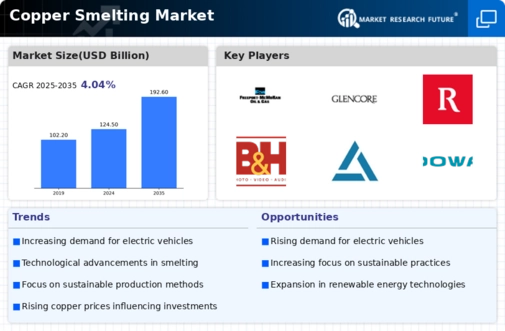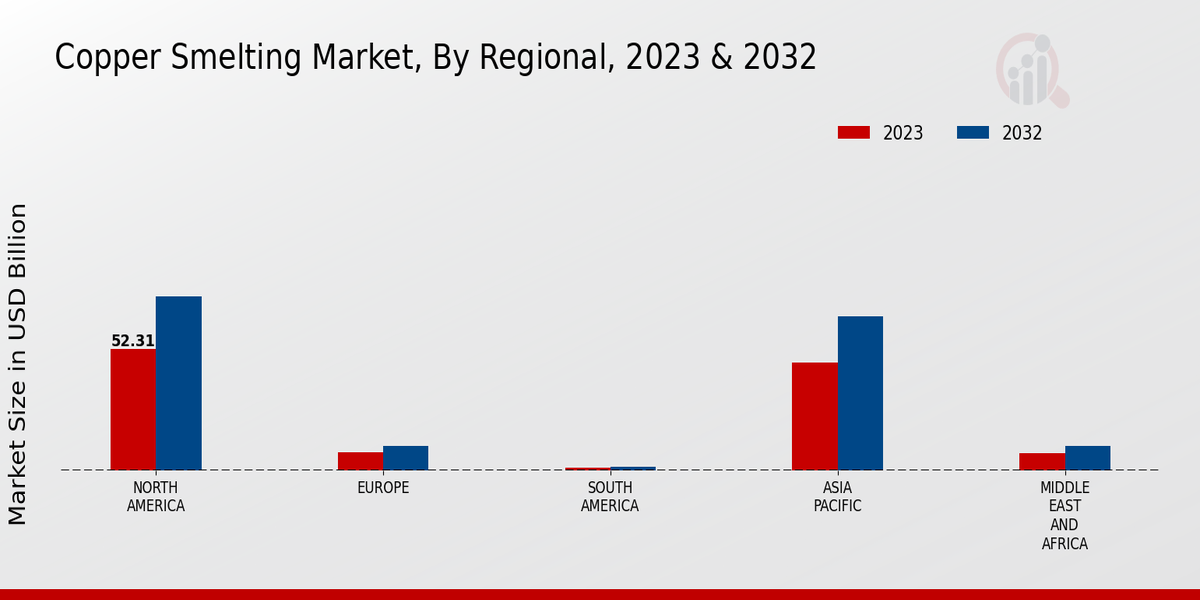Market Growth Projections
The Global Copper Smelting Market Industry is projected to experience substantial growth in the coming years. With a market valuation of 124.5 USD Billion in 2024, the industry is expected to expand significantly, reaching an estimated 192.6 USD Billion by 2035. This growth trajectory indicates a compound annual growth rate of 4.04% from 2025 to 2035. Factors driving this expansion include rising demand from various sectors, including electronics, infrastructure, and renewable energy. As the global economy evolves, the copper smelting industry is likely to adapt and thrive, positioning itself as a critical component of future industrial developments.
Infrastructure Development Initiatives
Infrastructure development remains a pivotal driver for the Global Copper Smelting Market Industry. Governments worldwide are investing heavily in infrastructure projects, including transportation, utilities, and urban development. These initiatives require substantial amounts of copper for wiring, plumbing, and structural components. As countries strive to modernize their infrastructure, the demand for copper is likely to rise significantly. The anticipated growth in infrastructure spending could lead to a market valuation of 192.6 USD Billion by 2035. This increasing investment in infrastructure not only supports economic growth but also enhances the demand for copper smelting, thereby solidifying its importance in the global market.
Transition to Renewable Energy Sources
The Global Copper Smelting Market Industry is poised to benefit from the ongoing transition to renewable energy sources. As nations commit to reducing carbon emissions, the demand for copper in renewable energy technologies, such as solar panels and wind turbines, is expected to increase. Copper's excellent conductivity makes it a preferred material for electrical components in these technologies. The growth of the renewable energy sector is likely to drive copper consumption, contributing to a compound annual growth rate of 4.04% from 2025 to 2035. This transition not only supports environmental goals but also positions copper smelting as a critical player in the global energy landscape.
Rising Demand for Copper in Electronics
The Global Copper Smelting Market Industry is experiencing a surge in demand driven by the increasing use of copper in electronic devices. As technology advances, the need for efficient conductors in smartphones, laptops, and other electronic gadgets grows. In 2024, the market is projected to reach 124.5 USD Billion, reflecting the essential role copper plays in modern electronics. This trend is expected to continue, as the global push towards smart technologies and renewable energy solutions further amplifies copper consumption. The electronics sector's reliance on copper suggests a robust growth trajectory for the smelting industry, potentially leading to an expanded market presence.
Increasing Recycling of Copper Materials
The Global Copper Smelting Market Industry is witnessing a notable increase in the recycling of copper materials. As sustainability becomes a priority, the recycling of copper scrap is gaining traction due to its economic and environmental benefits. Recycled copper requires significantly less energy to process compared to primary copper production, making it a more sustainable option. This trend not only reduces the environmental footprint of copper smelting but also ensures a steady supply of raw materials. The growing emphasis on circular economy principles is likely to enhance the role of recycling in the copper market, contributing to a more resilient and sustainable industry.
Technological Advancements in Smelting Processes
Technological advancements in smelting processes are transforming the Global Copper Smelting Market Industry. Innovations such as flash smelting and hydrometallurgical techniques enhance efficiency and reduce environmental impact. These modern methods allow for higher recovery rates of copper from ores, thereby increasing overall production capacity. As smelting technology evolves, it is likely to lower operational costs and improve profitability for smelting companies. This trend suggests a more sustainable and economically viable future for the industry, attracting investments and fostering growth. The integration of advanced technologies is essential for meeting the rising global demand for copper while adhering to stricter environmental regulations.
























Leave a Comment